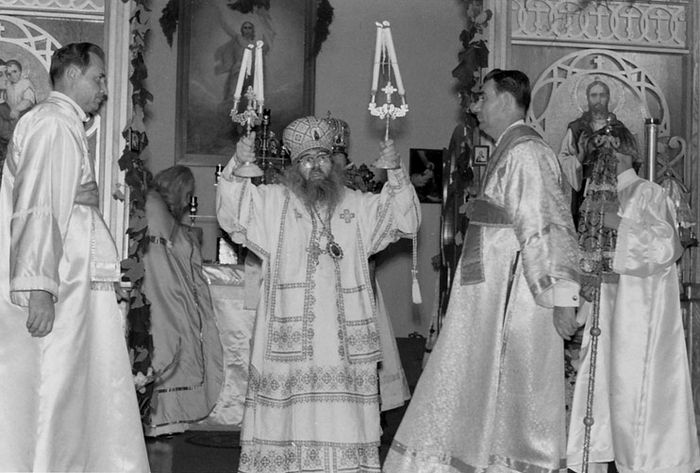 A list of the rules for young altar servers composed by Archbishop John of Shanghai:
A list of the rules for young altar servers composed by Archbishop John of Shanghai:
1) To serve in the sanctuary, it is necessary to take the blessing of the priest, or at an hierarchical service, the Hierarch.
2) One must come to church before the beginning of the service.
3) On entering the sanctuary, one must face the Holy Table and, on weekdays, make three full prostrations to the ground, or, on Sundays and the feasts of the Lord, three profound bows from the waist.
4) Those persons who are not serving are not permitted to enter the sanctuary.
5) Only those who have gathered to serve may enter the sanctuary.
6) When vesting in their stikharions [servers’ robes], servers should remove their ties [Ties, or neckties as the Americans call them, are considered to be an unnecessary adornment. One often finds in Russian parishes that even laymen in the congregation do not wear them—ed.]
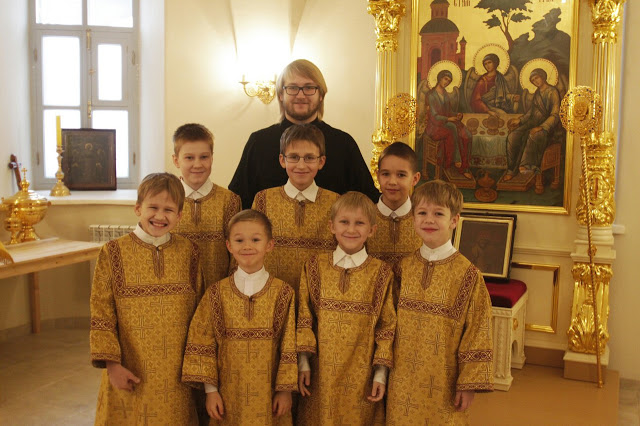
7) When taking off the stikharion, it must be neatly folded or hung in its place.
8) In the sanctuary one should not engage in conversations, nor laugh, nor should one walk about the church, and particularly is this so during the Divine service itself.
9) All readers and altar-servers must be in stikharions. One must also obtain a blessing from the priest, or in an hierarchical service the Hierarch, to take off one’s stikharion.
10) For communion of the Holy Mysteries, the servers, with the exception of the readers, take off their stikharions.
11) They should not touch the Holy Table nor the Table of Oblation (proskomidi).
12) They should not walk about in church during the reading of the Gospel, the Apostle or between the exclamations “The Grace of our Lord Jesus Christ …” and “And the mercies of our great God and Saviour Jesus Christ be with you all.”
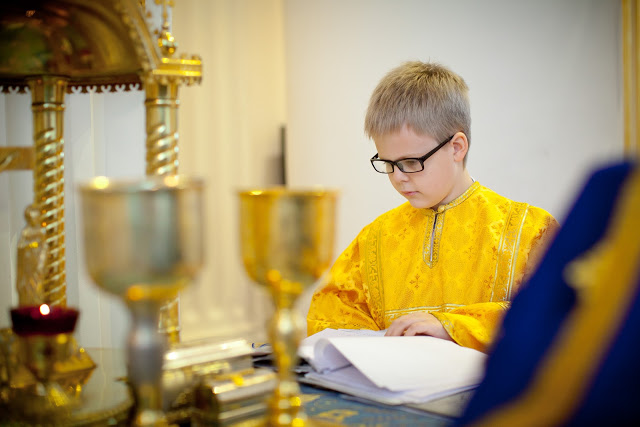
13) Even before putting on the stikharion, their hands must be clean.
14) In the sanctuary and sacristy, nothing should be brought that is not used in the Divine services.
15) Sitting down, while wearing the stikharion, is not permitted.
16) Before taking candles or the liturgical fans out, the server should cross himself before the icon in the High Place and bow to the Hierarch or priest, who stands before the Holy Table. On returning, they should repeat this.
17) One must bear in mind that the sanctuary is the most holy place, and that it is required that one stand therein with the utmost reverence; in passing the High Place one must cross oneself, and one must always follow the service with attention.
18) During the “I believe” and the “Our Father, ” all the servers go out onto the ambon to join in the general singing. [In the Russian practice, the creed and the Lord’s Prayer are sung and not recited].
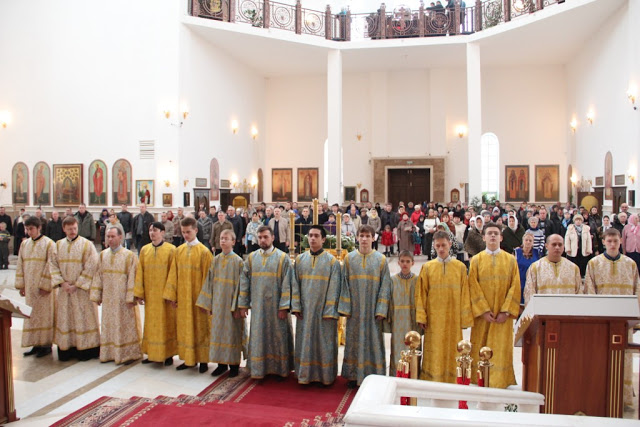
19) At the time when the clergy are receiving Holy Communion, the servers should stand reverently within the sanctuary; and during the sermon they should leave to stand on the ambon to listen to it.
20) Those who break the Church Rule for Servers, should stand on the left kliros [choir place] until the end of the service.
N.B. These disciplines are not kept in exactly this way in every church, but they do indicate the seriousness with which such a great saint of our times as St John took the duties of the altarservers, and should remind us of the importance of this ministry, and the good order which should be observed.
From “The Shepherd”, Vol. XX, No. 11 (July 2000), pp. 8-9

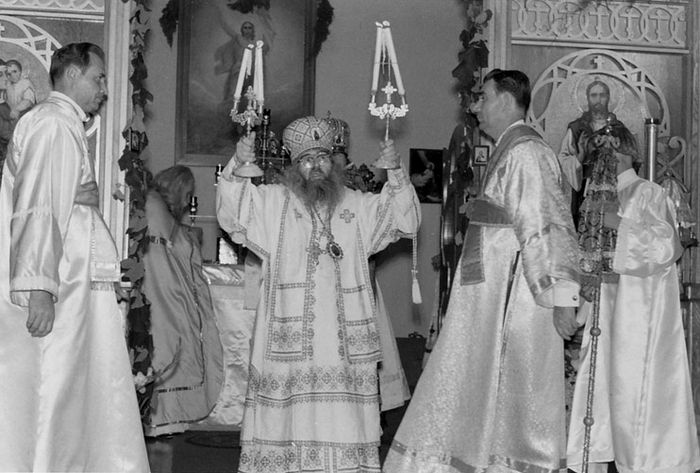
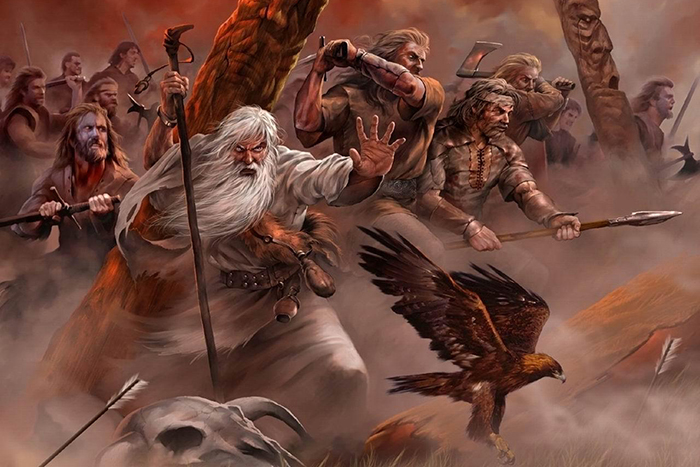
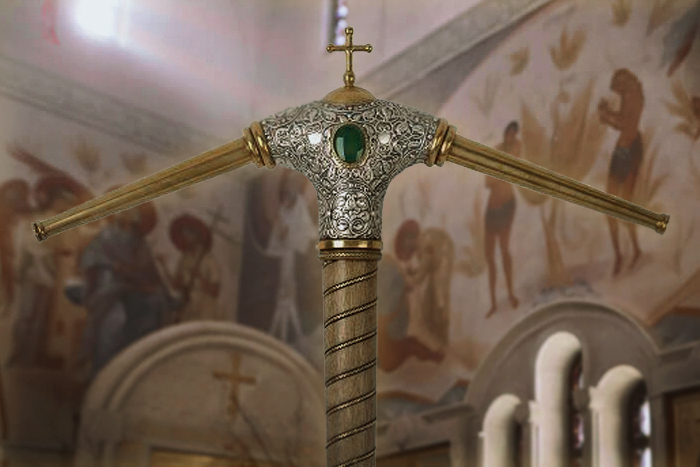

Rules are different for hierarchs (and I think priests are also supposed to sit during the Epistle reading? maybe? while no one else is). I agree that this isn't the best photo to illustrate the point! But note that the subdeacon in the photo is standing because he isn't supposed to sit.